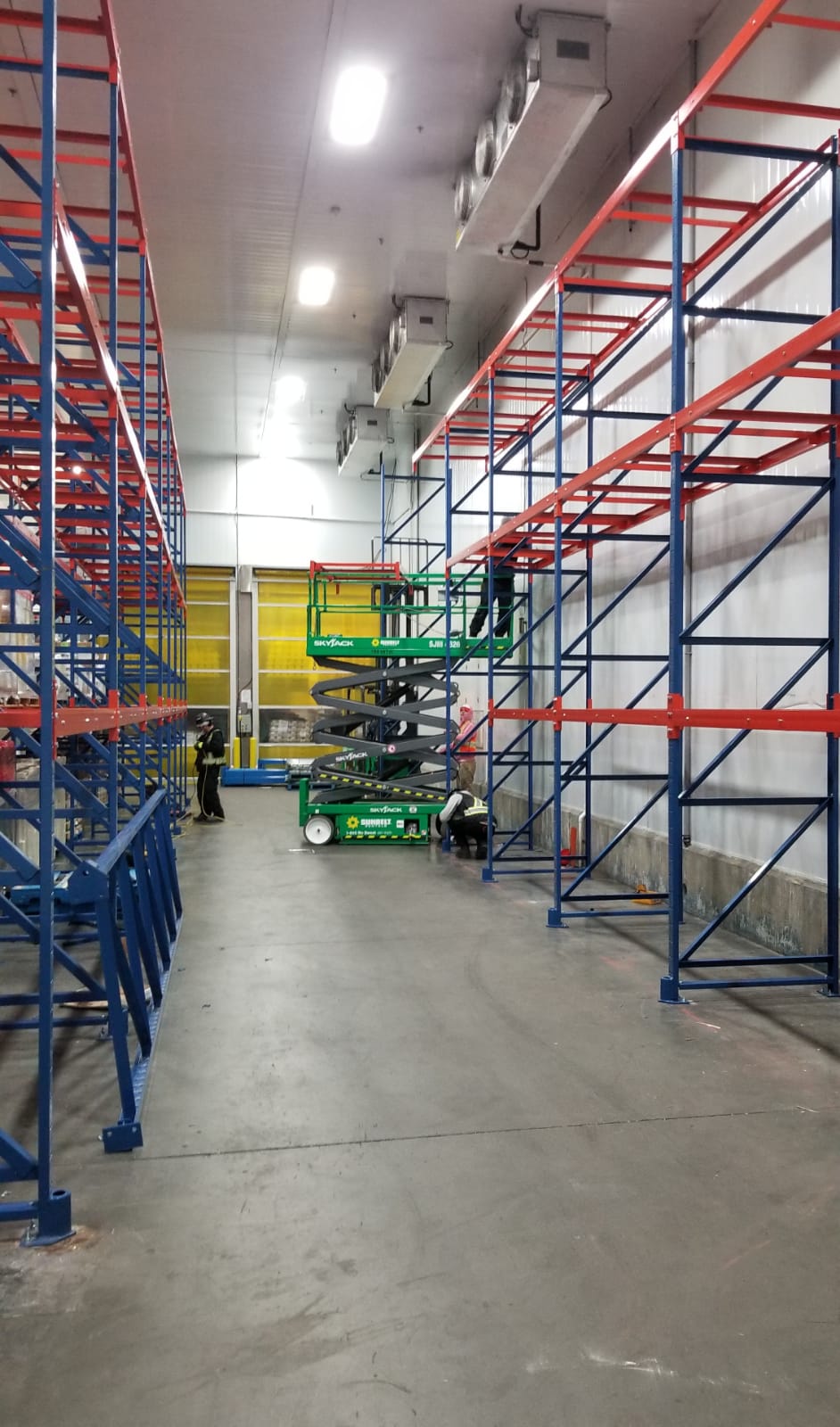DELTA, B.C. – DAMAGED RACK TIPS OFF TWO BIGGER ISSUES: RACK THAT’S UNDERBUILT FOR WEIGHTS AND UNDERPREPARED FOR A SEISMIC EVENT.
Back in late 2018, the warehousing industry was abuzz with new WorksafeBC regulation that was about to implemented: rack measuring eight feet and taller would now require inspections and weight chart placards per 4.43.1 “storage racks,” a new section of the OHS Regulation Part 4: General Conditions.
The regulation prompted a major farmer-owned, dairy processing co-operative with a mind for safety to reach out to Steelhead Warehouse Solutions for a rack inspection at its yogurt packaging operation in Delta.
Donning hair nets and lab coats, Steelhead inspectors toured the approximately 30,000-square-foot sterile manufacturing facility. The floor plan was divided into dry storage and cooler storage, and outfitted with selective racking. The inspection revealed a good amount of damage. The cause? Multi-functional areas (shipping, receiving, raw material storage, production, cold storage, etc.) located in close quarters were contributing to forklift damage, which roll formed rack is less able to withstand impact from.
The final report’s top-level observations included aging rack and general damage, in addition to finding the rack to be underbuilt for the client’s product weights and the seismic requirements outlined by the BC Building Code 2018.
Each instance of damage was comprehensively itemized, complete with the location, a description and a photo. Ultimately, Steelhead recommended the best course of action was to replace the rack.
With the scope of the project now broadened beyond an inspection, the job became competitive with the dairy co-operative receiving one additional proposal.
PROPOSAL & DESIGN
Steelhead submitted a proposal that would replace the aging roll formed rack entirely with hardier structural rack which boasts a much higher pounds-per-square-inch weight capacity and can endure greater impact from forklift equipment. In our experience, we find the food industry tends to store heavier weights—which structural rack is better suited for—and this was doubly true for the dairy processer’s facilities which were characterized by confined spaces, laneways with high traffic volume and high turnover, perishable inventory.
The design also included bull nose protectors (made from heavy duty structural steel to further tolerate abuse from handling equipment) and rub rails (heavy, horizontal impact channels affixed at the floor level to protect frames from vehicle and pallet damage) to fortify the rack system.
Steelhead won the job.
INSTALLATION
Working in an active food production facility required special accommodations of our installers: hair (and beard) nets, gloves, lab coat-style jackets and safety glasses. An emissions-free, electric forklift was also necessary.

One of the conditions of securing the job was performing an install that did not impact the dairy processor’s busy production schedule. As such, Steelhead’s team worked over four separate weekends to dismantle the old rack system and then install 80 bays of brand new racking,
This project completed on budget, with the original inspection taking place in spring 2019 and install wrapping up in fall.